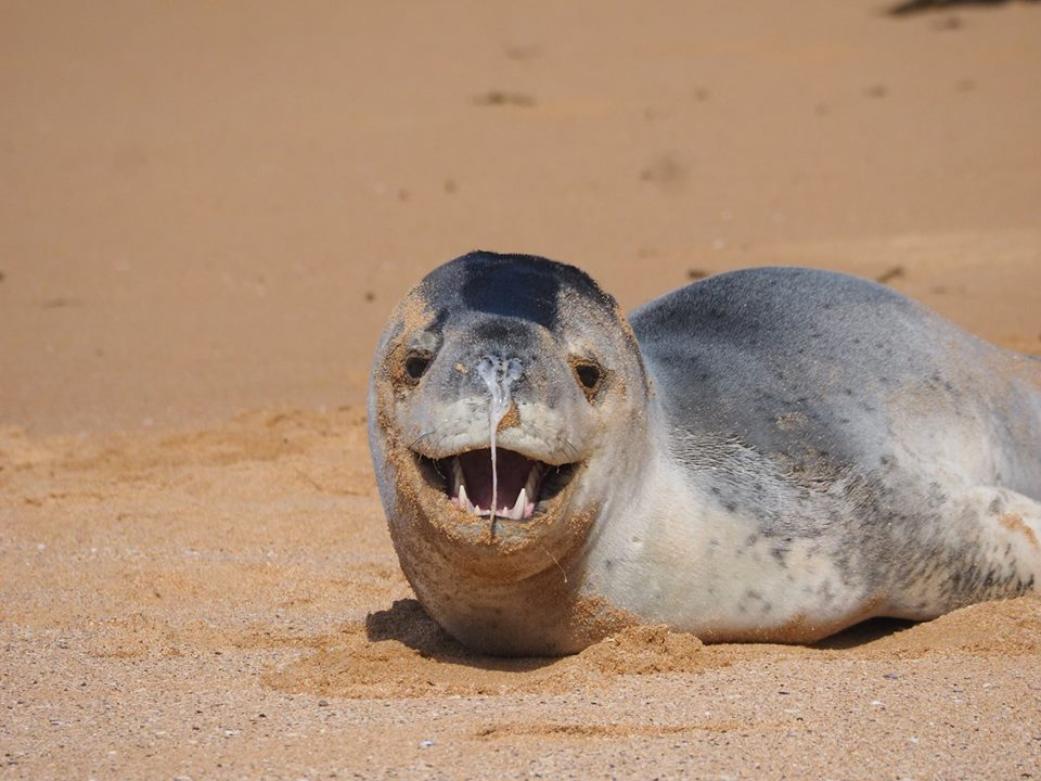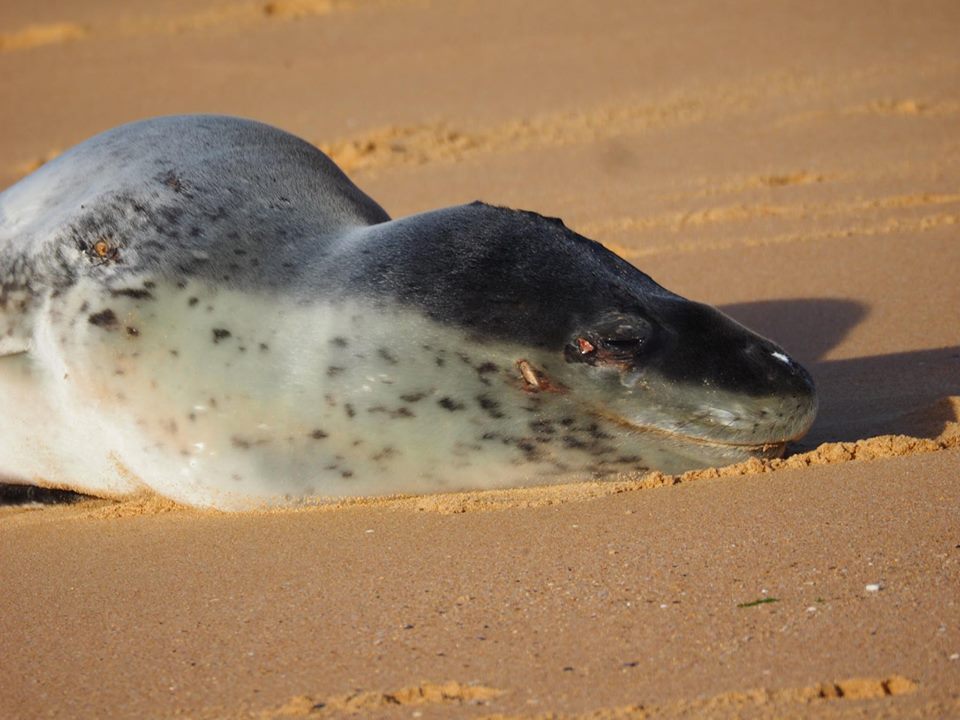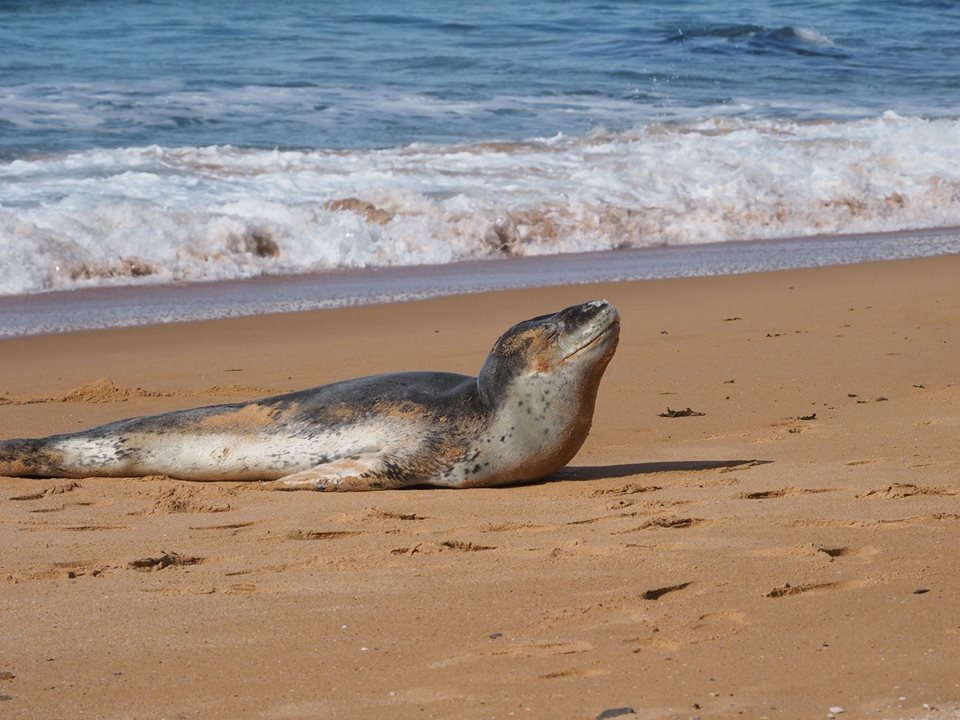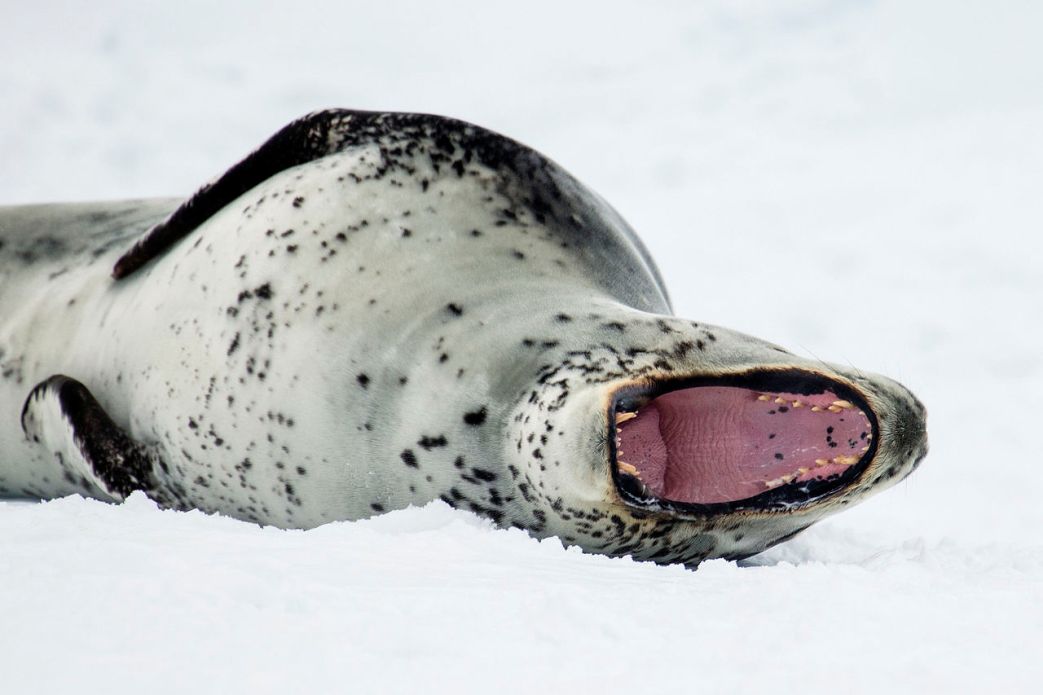August 13 - 19, 2017: Issue 325
Leopard Seal on Bungan Beach: Please Maintain at Least 40 Metres from Seals that Come ashore at this time of year

Leopard Seal on Bungan Beach - photos by David Jenkins
The Leopard seal shown above came ashore to rest at Bungan Beach on Thursday this week (August 10th). Jools Farrell, a volunteer with ORRCA and Sea Shepherd was on the beach monitoring the seal's condition.
" The seal had bites from a shark. " Jools explained, "my job was to keep the public and dogs away so it could rest and recuperate until it wanted to go away again. He seemed in good health otherwise, had eaten recently. "
" It is amazing how seals do recover from such dreadful injuries. He is now away to far north. "
" It seems like we have a Leopard Seal convention going on at the moment, as there has been at least 4 sighted in recent days. The public need to keep away and let any seal they encounter rest, that is why I was there.” Jools reminds us.


If you see a seal that looks like it is in distress or has a wound please notify ORRCA on 02 9415 3333.
This seal seeking shelter is a reminder that we share our saltwater environment with all that lives here and need to follow guidelines put in place to look after them as much as ourselves.
Seals are protected in New South Wales. It is an offence to interfere with or approach within 40 metres of an adult and 80 metres of a pup seal or sea lion. Maximum penalties for individuals include fines of up to $110, 000. 00 and imprisonment for two years.
ORRCA - 24 Hour Hotline Phone: 02 9415 3333
These seals can get aggressive very quickly, no matter how lethargic they may appear at first. Leopard seals can lunge over 2m, and have attacked people before. Keep pets and children well away.
What is perplexing is why ORRCA has had so many reportings of Leopard Seals - these animals usually prefer waters a lot further south but one has been spotted as far north as North Entrance on August 9th - it too was showing a wound form a shark attack, while another juvenile was seen at Greenhills beach in South Sydney - this one just sunning itself, on August 8th.
ORRCA Vice-President Shona Lorigan said leopards seals were regularly seen along the coast at this time of the year as they swim north from their home in Antarctica.
The cuts seen on the seal were known as cookie cutter shark bites and were normal for sea animals, Shona explained.

The leopard seal lives in the cold waters surrounding the Antarctic continent. Where most seals remain restricted within the pack ice throughout the year, some (mostly young animals) move further north in the austral winter to subantarctic islands and the coastlines of the southern continents. They are difficult to survey by traditional visual techniques because they spend long periods of time vocalizing under the water during the austral spring and summer - when visual surveys are carried out. This trait of vocalizing underwater for long periods however has made them available to acoustic surveys. Leopard seals are solitary and widely distributed throughout the pack ice. Higher densities of leopard seals are seen in the Western Antarctic than in other regions.
The leopard seal (Hydrurga leptonyx), also referred to as the sea leopard, is the second largest species of seal in the Antarctic (after the southern elephant seal). Along with all of the other earless seals, it belongs to the family Phocidae, and is the only species in the genus Hydrurga. The name hydrurga means "water worker" and leptonyx is the Greek for "small clawed". [1.]

About ORRCA
From OORCA website:
ORRCA (Organisation for the Rescue and Research of Cetaceans in Australia) is the most experienced and successful whale rescue organisation in Australia.
Every year ORRCA trains many members of government agencies (including the Department of Environment and Climate Change) and ORRCA Members in marine mammal rescue.
ORRCA is also involved with the protection and welfare of seals, sea lions, dolphins and dugongs. Every year ORRCA volunteers spend many hours protecting hauled out seals and monitoring other marine mammals. We also work with Government Authorities and other groups with marine mammal rehabilitation and release. ORRCA's input is also sought when legislative bodies are amending existing laws or introducing new ones.
We assist with, monitor, and give advice on marine animal entanglements.
ORRCA members receive a quarterly newsletter 'Flippers and Flukes'. This keeps members up to date with the latest in best practices and procedures from Australia and around the world. We also encourage our members to tell stories of their experiences with marine wildlife.
We have active research programs to better understand the problems that marine mammals encounter and to discover possible solutions and favourable outcomes. Our research includes necropsies, bone recoveries, skeletal exhumations, whale migration and behaviour monitoring and observations, as well as ongoing investigations in other areas.
Public education is another of our activities. We are always willing to share our knowledge as we are there for all.
Everyone in ORRCA is a volunteer. ORRCA is the only wildlife carers group in New South Wales licensed to be involved with marine mammal rescue, rehabilitation and release. Our members come from all walks of life, age groups and nationalities. We operate as a non-profit organisation and have charity status. View our constitution here.
Most importantly ORRCA operates a 24 hour, 7 days a week Marine Mammal Hotline. This telephone Hotline is staffed by volunteers and keeps ORRCA members, Government Authorities and interested members of the public informed of marine mammal emergencies, incidents and sightings. These incidents are not only in New South Wales but often in other states or even other countries.
ORRCA receives limited grants but otherwise relies on income from memberships, donations and workshops to keep the hotline and the organisation functioning.
ORRCA membership is open to all and your enquiries are welcome by visiting our Contacts page.
Website: www.orrca.org.au

Leopard seal (Hydrurga leptonyx), Antarctic Sound, near Brown Bluff, Tabarin Peninsula. Photo - Andrew Shiva.
1. Leopard seal. (2017, July 29). In Wikipedia, The Free Encyclopedia. Retrieved from
https://en.wikipedia.org/w/index.php?title=Leopard_seal&oldid=792946030